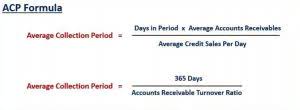
The ratio, which is calculated by dividing current assets by current liabilities, shows how well a company manages its balance sheet to pay off its short-term debts and payables. It shows investors and analysts whether a company has enough current assets on its balance sheet to satisfy or pay off its current debt and other payables. The current ratio measures a company’s ability to pay its short-term financial debts or obligations. It shows investors and analysts whether a company has enough current assets on its balance sheet to satisfy or pay off its current debt and other payables.

Essential Characteristics of Liabilities

A company with too many liabilities compared to its assets may face cash flow problems or increased financial risk. Understanding a company’s liabilities can also help assess its ability to meet debt obligations and the potential for future growth. Any debt a business or organization has qualifies as a liability—these debts are legal obligations the company must pay to third-party creditors. Examples of liabilities include deferred taxes, credit card debt, and accounts payable.
Types of Liability Accounts – Examples

Current liabilities have lower interest rates in comparison with non-current or long-term liabilities. The long-term nature of non-current liabilities results in high interest rates. Liabilities work when a company realizes that there is a great need for external funding. This funding helps businesses generate cash flow and purchase equipment to speed up their production process.
Understanding Current Liabilities
- For example, banks want to know before extending credit whether a company is collecting—or getting paid—for its accounts receivable in a timely manner.
- Hence, businesses are liable to pay salaries and wages to their employees after the employees have performed their duties.
- A normal operating cycle is the time frame needed to convert money to raw materials, finished products, sales, accounts receivable, and money back again.
- The debt is unsecured and is typically used to finance short-term or current liabilities such as accounts payables or to buy inventory.
- Her expertise is in personal finance and investing, and real estate.
- Most people only know the negative aspect of liability and don’t consider how this frequently misunderstood business term can help grow your business.
There are a small number of contra liability accounts that are paired with and offset regular liability accounts. One of the few examples of a contra liability liability account examples account is the discount on bonds payable (or notes payable) account. As a small business owner, you need to properly account for assets and liabilities.
- For example, wages payable are considered a liability as it represents the amount owed to employees for their work but not yet paid.
- Maintaining high liquidity is crucial for covering short-term liabilities, ensuring that a company has sufficient cash and assets that can be readily converted into cash.
- Lease payments are a common type of other liability in accounting.
- These liabilities affect a company’s financial structure because they indicate the amount of debts you have acquired to finance your assets and business operations.
- Michelle Payne has 15 years of experience as a Certified Public Accountant with a strong background in audit, tax, and consulting services.
Contra Liability Account: What it is, How it Works, Example
The bond issuer (company) must pay a coupon (interest) based on coupon rate and face value. At maturity, the issuer must pay the final coupon plus the principal. Our article about accounting basics discusses in detail the concepts https://www.bookstime.com/ you need to understand small business accounting. Try FreshBooks for free by signing up today and getting started on your path to financial health. Liability may also refer to the legal liability of a business or individual.

Liabilities in Accounting: Understanding Key Concepts and Applications
Current assets represent all the assets of a company that are expected to be conveniently sold, consumed, used, or exhausted through standard business operations within one year. Current assets appear on a company’s balance sheet and include cash, cash equivalents, accounts receivable, stock inventory, marketable securities, prepaid liabilities, and other liquid assets. The analysis of current liabilities is important to investors and creditors. For example, banks want to know before extending credit whether a company is collecting—or getting paid—for its accounts receivable in a timely manner. On the other hand, on-time payment of the company’s payables is important as well.
Type 2: Principle & interest payable
The operating cycle refers to the period of time it takes for the business to turn its inventory into sales revenue and then back into cash, which helps cover these expenses. A well-managed operating cycle ensures that there is sufficient cash flow to meet these liabilities as they come due. Current liabilities of a company consist of short-term financial obligations that are typically due within one year. Current liabilities could also be based on a company’s operating cycle, which is the time it takes to buy inventory and convert it to cash from sales. Current liabilities are listed on the balance sheet under the liabilities section and are paid from the revenue generated from the operating activities of a company. Banks, for example, want to know before extending credit whether a company is collecting—or getting paid—for its accounts receivables in a timely manner.
Liabilities in accounting are crucial for understanding a company’s financial position. They represent obligations or debts that a business owes to other parties, such as suppliers, lenders, and employees. Liabilities can take various forms, like loans, mortgages, or accounts payable, and play a significant role in determining a company’s financial health and risk. They are vital components of a balance sheet, which is one of the primary financial statements used by stakeholders to assess a company’s performance and sustainability. A liability account in accounting represents the various financial obligations a company owes to others, recorded on its balance sheet. These accounts are essential in tracking and managing debts and obligations arising from past business transactions.

FAQs On Liabilities In Accounting
Current liabilities are obligations due for payment within one year from the balance sheet date, requiring the company to maintain sufficient liquidity to cover these obligations. Contingent liabilities are potential future obligations that depend on the occurrence of a specific event or condition. These liabilities may or may not materialize, and their outcome is often uncertain. Examples of contingent liabilities include warranty liabilities and lawsuit liabilities.
